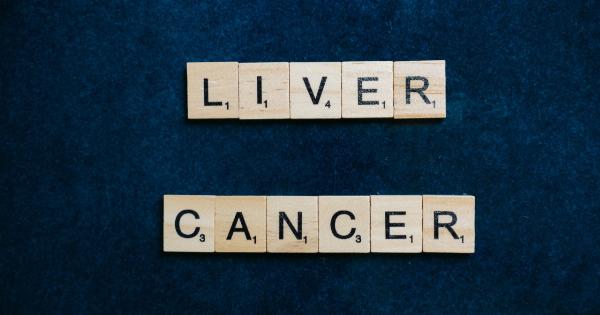Drinking alcohol is a popular social activity that is often enjoyed in moderation. However, excessive and chronic alcohol consumption can have detrimental effects on various organs, including the liver.
Liver cancer is one such grave consequence of risky drinking habits. This article explores the connection between alcohol consumption and liver cancer and emphasizes the importance of understanding the risks associated with excessive drinking.
Understanding Liver Cancer
Liver cancer, also known as hepatocellular carcinoma, is a type of cancer that originates in the liver cells. It is the sixth most common cancer globally and is responsible for a significant number of cancer-related deaths each year.
There are several risk factors associated with liver cancer, including hepatitis B and C infections, diabetes, obesity, and exposure to certain chemicals. Alcohol consumption, particularly heavy and prolonged drinking, is also a major risk factor for developing liver cancer.
The Link Between Alcohol and Liver Cancer
Alcohol abuse or excessive alcohol consumption can cause inflammation and various forms of liver damage. The liver is responsible for metabolizing alcohol, and when alcohol is consumed in excessive amounts, the liver works overtime to break it down.
Prolonged heavy drinking leads to a condition known as alcoholic liver disease (ALD), which is an umbrella term encompassing three stages of liver damage: fatty liver, alcoholic hepatitis, and cirrhosis.
The Role of Inflammation in Liver Cancer
Chronic or long-term inflammation plays a crucial role in the development of liver cancer.
Excessive alcohol consumption leads to inflammation of the liver, which can trigger an immune response, resulting in the production of various chemicals that damage liver cells. The constant cycle of inflammation and damage increases the risk of genetic mutations and the development of liver cancer.
Fibrosis and Cirrhosis
Prolonged alcohol abuse can also lead to the development of fibrosis and cirrhosis, both of which significantly increase the risk of liver cancer.
Fibrosis occurs when liver cells are repeatedly damaged and scar tissue begins to form, replacing healthy liver tissue. Over time, if left untreated, fibrosis can progress to cirrhosis.
Cirrhosis is a condition characterized by widespread scarring throughout the liver, which impairs its ability to function properly. People with cirrhosis have a significantly higher risk of developing liver cancer.
Other Factors Influencing the Risk
While excessive alcohol consumption is a well-established risk factor for liver cancer, additional factors can further increase this risk.
These factors include the coexistence of viral hepatitis infections (especially hepatitis B or C), smoking, obesity or poor dietary habits, and certain genetic factors.
Alcohol and Hepatitis B/C Co-Infections
Viral hepatitis, particularly hepatitis B and C, is a significant risk factor for liver cancer. When alcohol abuse is combined with viral hepatitis infection, the risk of developing liver cancer becomes even more pronounced.
The combination of alcohol and hepatitis B/C co-infections accelerates the progression of chronic liver disease and increases the likelihood of developing liver cancer.
The Importance of Genetic Factors
Genetic factors also play a role in determining an individual’s susceptibility to liver cancer.
Certain genetic variations, such as polymorphisms in alcohol-metabolizing enzymes, can make some individuals more prone to liver damage caused by alcohol consumption. Understanding these genetic factors can help identify individuals who are at a higher risk and allow for targeted interventions and preventive measures.
Prevention and Risk Reduction
Preventing liver cancer associated with risky drinking primarily involves adopting healthier drinking habits and making lifestyle changes. Consider the following strategies:.
- Limit Alcohol Consumption: It is crucial to adhere to recommended alcohol consumption guidelines. Men should limit their intake to two standard drinks per day, while women should limit their consumption to one standard drink per day. It is advisable to have alcohol-free days each week.
- Avoid Binge Drinking: Binge drinking, defined as consuming five or more drinks within a short span for men and four or more drinks for women, significantly increases the risk of liver damage and liver cancer. Avoid binge drinking and pace alcohol consumption.
- Consider Non-Alcoholic Alternatives: Opt for non-alcoholic beverages during social gatherings or events. Numerous alcohol-free alternatives are available that allow individuals to participate in social activities without consuming alcohol.
- Be Aware of Underlying Conditions: Individuals with pre-existing liver conditions or hepatitis B/C infections should exercise caution when consuming alcohol. Coexisting risk factors can exacerbate the damage caused by alcohol consumption.
- Healthy Lifestyle: Practicing a healthy lifestyle, including regular exercise, a balanced diet, and maintaining a healthy weight, can reduce the risk of developing liver cancer. These lifestyle choices have protective effects on overall liver health.
Seeking Help and Support
If you or someone you know is struggling with alcohol addiction or finding it challenging to reduce alcohol consumption, seeking professional help and support is crucial.
Numerous organizations and healthcare professionals specialize in addiction and alcohol rehabilitation and can provide the necessary assistance and guidance in overcoming alcohol dependence.
Conclusion
Risky drinking and excessive alcohol consumption can have severe consequences on liver health and significantly increase the risk of developing liver cancer.
Chronic inflammation, liver damage, fibrosis, and cirrhosis are all significant steps on the destructive path that can ultimately lead to liver cancer. Recognizing the importance of responsible drinking, understanding the risk factors associated with liver cancer, and adopting healthier lifestyle choices can help reduce the risk and protect the liver’s overall health.






























